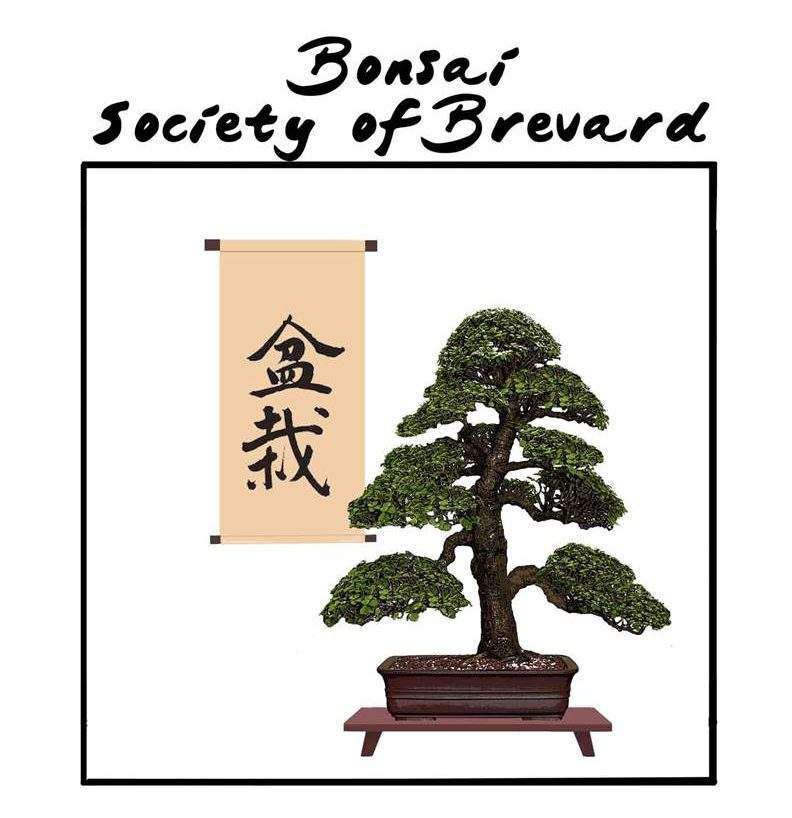This is a continuation of the bonsai care guidance authored by Jim Smith and originally printed in Florida Bonsai Magazine in 1986. It has been updated by Jim and is reprinted with both his permission and that of Florida Bonsai Magazine. The care guidance is suitable for Zones 9b and 10a.

Bonsai in Brevard (Zone 9b and Zone 10a)
Although March 20th is officially the first day of spring, our plants began to react to spring weather last month. As March is usually very dry and windy, make sure that your plants, particularly those that have just been potted, are protected. Our winter weather is usually over now but we do have frost and occasionally a freeze in March. Continue to monitor the weather forecast.
Watering
Now that your plants are growing again, they will need to be watered more often. Plants that have just been repotted will not need as much as those that are root bound. Check them all every day and you will soon learn, from experience, which plants need the most attention. From now until winter, many of your plants will need to be watered every day.
Fertilizer
Now is the time to fertilize everything. For potting our bonsai most of us use a soilless mix which contains very few nutrients. We must therefore fertilize regularly. Use a fertilizer that contains all the major elements, (Nitrogen, Phosphorus, Potassium) and minor elements such as Iron, Zinc, Copper, Magnesium, Manganese, Molybdenum and Boron. Apply slow release fertilizer a week before you expect new growth. If you use liquid or other quick acting fertilizer, start using it when you see the new buds begin to open, and continue all through the growing season. Never apply at a higher rate than is recommended by the manufacturer.
Insects and Diseases
With the warm weather and the new growth on our plants also come the insects. Aphids, scale, white flies, mites and most of the other Florida critters may soon pay our bonsai a visit. The chewing insects, mostly larvae, often feed at night and are not seen. When we notice the damage leaves, immediate spraying with Sevin or other stomach poison is important because they can defoliate a plant in a few days if not controlled. Damage done by sucking insects such as scale, aphids, white fly, mealy bugs, thrips and mites is not always immediately evident unless you examine the plant carefully. They suck the juices from the leaves and stems of the plant, causing the leaves to change color and sometimes to drop. Control by spraying with a pesticide labeled for the particular insect you want to control.
Pinching
Refinement is the name of the game if you want an outstanding bonsai. Follow the suggestions listed below and you will improve your bonsai.
- When you repot your bonsai, compare it with the last photograph you took of it.
- Remove all branches that are not necessary.
- Wire all branches that need to be adjusted.
- Refine each branch, starting at the tip and working toward the trunk. The secondary branches are short at the tip of the branch and longer near the trunk.
- Pinch the new buds all through the growing season to develop the shape you wish to create.
- Leaf prune any tree if all the leaves are too large. Continue to pinch to maintain small leaves.
- Don’t forget a new photograph for future comparison.
Potting
Even though many of our bonsai can be potted at any time, it is better to complete your repotting this month so that they can become established before summer. Some of your bonsai may have developed to the point where they are ready to be changed from their over-sized training pot to a more suitable container. Study the pots that you are using for training other bonsai. If one of your bonsai in training is potted in a container better suited to a finished bonsai, trade pots. Finding a pot that is just right for a finished bonsai is not always easy. Determine the size, shape and color of the pot that would complement your tree the most. When you locate such a pot, don’t hesitate, – buy it!
Wiring
Be sure to check the wires regularly to make sure that they do not cut into the bark. A plant that is growing vigorously should be checked two weeks after wiring, especially if the wires were snug and/or the branch was bent sharply. If the wire is too tight, remove immediately and re-wire if necessary.
Cuttings and Layers
Get ready to start propagation with cuttings and airlayers next month.
Bonsai Society of Brevard
For more detailed information contact our Brevard based Bonsai club.
The Bonsai Society of Brevard is one of the many clubs within the Bonsai Societies of Florida.
